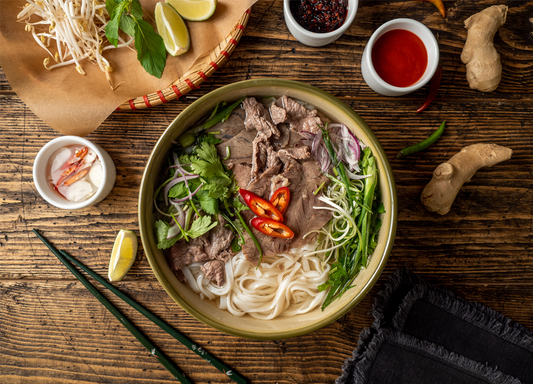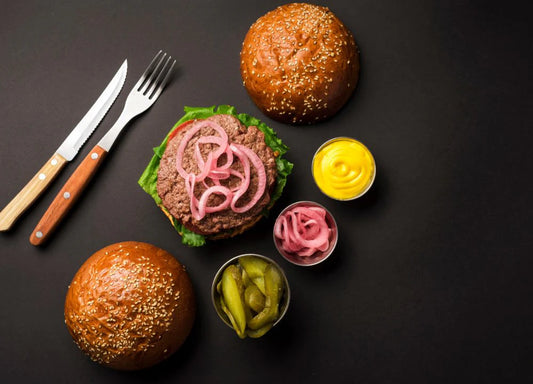How Pho Restaurants are Adapting to Modern Dietary Trends

Introduction: Evolving with the Times
Pho, the iconic Vietnamese noodle soup known for its rich, aromatic broth and tender slices of meat, has long been a staple of Vietnamese cuisine. Traditionally made with beef bones, rice noodles, and a variety of herbs and spices, pho has captured the hearts and taste buds of food enthusiasts around the world. As dietary preferences and health trends evolve, pho restaurants are finding innovative ways to adapt their menus to meet the demands of modern diners. This article explores how pho restaurants are adjusting to contemporary dietary trends, ensuring that this beloved dish remains relevant and accessible to a diverse audience.
Embracing Plant-Based and Vegan Options
One of the most significant dietary shifts in recent years has been the rise of plant-based and vegan diets. As more people seek alternatives to animal products for health, ethical, and environmental reasons, pho restaurants are responding with creative vegan and vegetarian options.
1. Plant-Based Broths:
Traditionally, pho broth is made from simmered beef bones, but many pho restaurants are now offering plant-based broths. These vegetarian broths often use a combination of mushrooms, seaweed, and vegetable stock to mimic the umami depth of the traditional beef broth. Ingredients like roasted onions, garlic, and a blend of spices are used to enhance the flavor profile.
2. Vegan Meat Substitutes:
To replace the traditional beef or chicken, restaurants are incorporating a variety of vegan meat substitutes. Options such as marinated tofu, seitan, and plant-based beef or chicken are used to provide a similar texture and flavor to the traditional proteins found in pho. These substitutes are often seasoned and prepared in a way that complements the broth and overall dish.
3. Customizable Options:
Many pho restaurants now offer customizable bowls where diners can choose from a range of plant-based toppings and proteins. This approach allows customers to create a pho bowl that suits their dietary preferences, whether they are vegan, vegetarian, or simply looking to reduce their meat consumption.
Catering to Gluten-Free and Low-Carb Diets
As awareness of gluten sensitivity and low-carb diets grows, pho restaurants are adapting to accommodate these dietary needs.
1. Gluten-Free Noodles:
Traditional pho noodles are made from rice flour, which is naturally gluten-free. However, some restaurants are taking extra steps to ensure that all aspects of their menu are gluten-free by using dedicated utensils and cooking equipment to avoid cross-contamination. Additionally, some pho restaurants offer alternative gluten-free noodles, such as those made from sweet potato or mung bean.
2. Low-Carb Alternatives:
For diners following low-carb or ketogenic diets, some pho restaurants have introduced alternative noodle options. Zucchini noodles (zoodles) or shirataki noodles, which are made from konjac yam, are becoming popular substitutes for traditional rice noodles. These options allow diners to enjoy the flavors of pho while adhering to their dietary restrictions.
3. Modified Broth Recipes:
In response to low-carb trends, some pho restaurants are offering modified broth recipes with reduced sugar and carbohydrate content. By using lower-sugar seasonings and adjusting the recipe, these establishments cater to health-conscious diners without compromising the flavor of the broth.
Highlighting Nutritional Benefits
With increasing interest in health and wellness, pho restaurants are emphasizing the nutritional benefits of their dishes.
1. Fresh Ingredients:
Many pho restaurants are highlighting the use of fresh, high-quality ingredients in their broths and toppings. Fresh herbs, vegetables, and lean cuts of meat are showcased as key components that contribute to the nutritional value of the dish. The use of bone broth, rich in collagen and amino acids, is often emphasized for its health benefits.
2. Nutritional Information:
To cater to health-conscious consumers, some pho restaurants are providing nutritional information on their menus. This transparency allows diners to make informed choices about their meal, including calorie counts, macronutrient breakdowns, and allergen information.
3. Health-Focused Promotions:
Restaurants are also promoting pho as a healthy dining option by highlighting its potential benefits. For example, the inclusion of fresh herbs like cilantro and basil, which are rich in antioxidants and vitamins, is often emphasized. Pho is also marketed as a balanced meal, combining protein, carbohydrates, and vegetables in one bowl.
Incorporating Dietary Trends into Marketing and Service
Pho restaurants are not only adjusting their recipes but also incorporating modern dietary trends into their marketing strategies and customer service.
1. Social Media and Digital Presence:
To reach health-conscious and dietary-restricted audiences, pho restaurants are leveraging social media and digital platforms. By showcasing their plant-based, gluten-free, and low-carb options through visually appealing posts and engaging content, restaurants attract a broader range of customers. Digital menus and online ordering systems also allow diners to easily select options that meet their dietary needs.
2. Collaborations and Partnerships:
Some pho restaurants are collaborating with health influencers, dietitians, and wellness bloggers to promote their new dietary options. These partnerships help raise awareness about the restaurant's offerings and build credibility within the health and wellness community.
3. Customer Feedback and Adaptation:
Restaurants are actively seeking feedback from customers to continuously improve their menu and service. By listening to customer preferences and dietary needs, pho establishments can adapt their offerings to better align with evolving trends and enhance the dining experience.

Conclusion: Adapting to the Future
As dietary trends continue to evolve, pho restaurants are demonstrating their ability to adapt and innovate. By offering plant-based options, accommodating gluten-free and low-carb diets, highlighting nutritional benefits, and embracing modern marketing strategies, pho restaurants are ensuring that this beloved dish remains accessible and appealing to a diverse audience.
The ability to adapt to changing dietary trends not only reflects the flexibility of pho but also the commitment of restaurants to meet the needs of their customers. As pho continues to gain popularity around the world, its evolution in response to modern dietary trends serves as a testament to its enduring appeal and relevance in the global culinary landscape.




